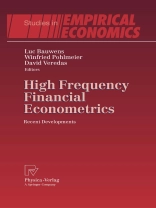In this paper, we propose a new econometric approach to jointly model the time series dynamics of the trading process and the revisions of ask and bid prices. We use this model to test the validity of certain symmetry assumptions very common among microstructure models. Namely, we test whether ask and bid quotes respond symmetrically to trade-related shocks, and whether buyer-initiated trades and seller-initiated trades are equally informative. In essence, the procedure we propose generalizes Hasbrouck’s (1991) vector autoregressive model for signed trades and changes in the quote midpoint by relaxing the implicit symmetry assumptions in his model. The properties of the empirical model are derived from a structural dynamic model for ask and bid prices. In this model, ask and bid prices share a common lung-run component, the efficient price. The long-term value of the stock varies due to buyer-initiated shocks, seller-initiated shocks, and trade-unrelated shocks. The transitory components of ask and bid prices are characterized by two correlated and trade-dependent stochastic processes, whose dynamics are allowed to differ. The trading process is endogenous. Buyer and seller-initiated trades are generated by two idiosyncratic but mutually dependent stochastic processes. The generating processes of quotes and trades both depend on several exogenous variables that feature the trades and the market conditions.
Spis treści
Editor’s introduction: recent developments in high frequency financial econometrics.- Exchange rate volatility and the mixture of distribution hypothesis.- A multivariate integer count hurdle model: theory and application to exchange rate dynamics.- Asymmetries in bid and ask responses to innovations in the trading process.- Liquidity supply and adverse selection in a pure limit order book market.- How large is liquidity risk in an automated auction market?.- Order aggressiveness and order book dynamics.- Modelling financial transaction price movements: a dynamic integer count data model.- The performance analysis of chart patterns: Monte Carlo simulation and evidence from the euro/dollar foreign exchange market.- Semiparametric estimation for financial durations.- Intraday stock prices, volume, and duration: a nonparametric conditional density analysis.- Macroeconomic surprises and short-term behaviour in bond futures.- Dynamic modelling of large-dimensional covariance matrices.












